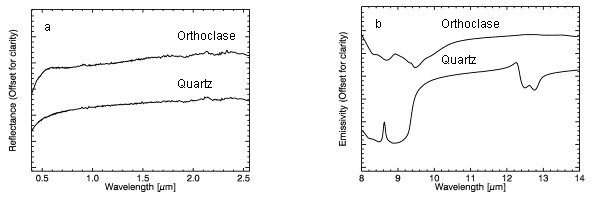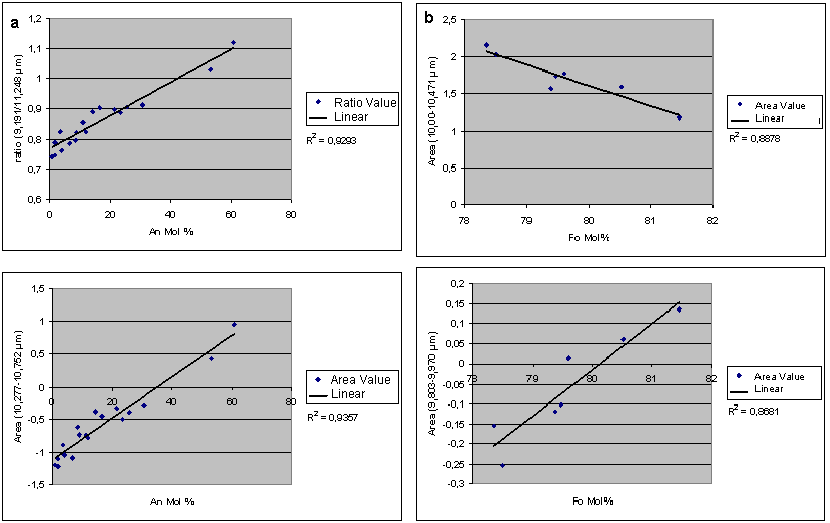Determination of modal composition of plutonic rocks from Mt. Timna, Southern Israel, using thermal infrared spectroscopy



Introduction:
A plurality of remote sensing application showed that hyperspectral reflectance data (0.5 - 2.5 µm) can be used for differentiation and identification of various rocks and minerals, due to spectral characteristics such as absorption features. However, an identification with respect to the mineralogical composition (modal composition) of magmatic rocks can not be achieved using this wavelength range (Fig. 1a). These rocks possess their specific spectral features as emission minima within the thermal wavelength range from 3 to 25 µm. Their shape and intensity are dependent on the mineralogical composition. The most intensive spectral features of the siliceous rock forming minerals can be observed between 8 and 14 µm (Fig. 1b) due to fundamental vibration of atoms and molecules. For rock identification using rock spectra, knowledge about spectral behavior and spectral variations of the constituents is needed, because a rock spectrum can be described by the combination of the particular spectra of the rock forming minerals. Many investigations were performed on that issue but most of these analyses used powder samples or KBr- disks for compositional determination whereas this investigation uses spectra of minerals measured in their compound.
Goal of this study:
This study followed a previous investigation (GIF-project) where a successful differentiation of the varying rock units of the magmatic complex Mt. Timna was performed using hyperspectral reflectance DAIS data. The main goal of this study is the quantification of the modal composition and the determination of plutonic rocks using thermal infrared spectra. The analyses are divided into three steps. The object of the first step is to extract stable spectral features which allow an identification of the minerals and the determination of their compositions. This includes the examination of spectral behavior and spectral variation of individual crystals of the rocks in respect to their chemical/mineralogical composition. Thus, the mineral analyses are focused on thermal spectra recorded from crystals which are in place (in situ) using thin sections. Additionally, on each measured crystal, the chemistry was analyzed for validation purposes using micro probe. The goal of the second step is the modeling of rock spectra (regarding modal compositions) using spectra from the before performed analyses. For this purposal a spectral library was generated which provides sufficient representative mineral spectra for modeling approaches. The third and last step is the determination of modal composition of magmatic rocks based on rock spectra of samples from Mt. Timna using the before developed model.
Diesen Beitrag gibt es leider nur auf Englisch. Bitte die Sprache umschalten.

